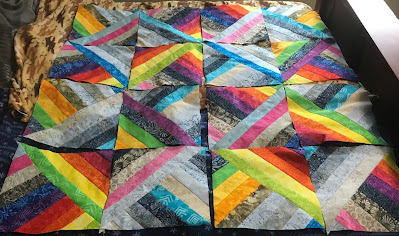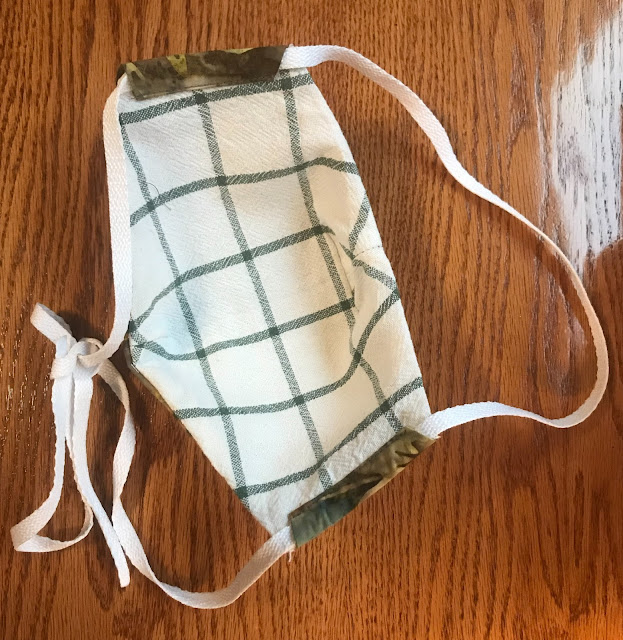With unrelenting, health-threatening, wildfire smoke filling the air, the advisories are to stay indoors with air filters running and a/c on. The coolness actually kept the garden from drying out, so I have not had to water. Will wear a filtration mask today and check.
Meanwhile, I worked on the quilt project that I posted 9.6.2020. The first steps are in that post. The method and overall pattern are from Ruby Star Society. My take on that is using batik strips that I bought via Amazon, one roll of muted blues and sandy colors, and one of rainbow colors. For some panels, I arranged the rainbow colors based on the pride and inclusion flag. For other panels, and mixed them with the sandy beach colors, and for some panels, it was all the seashore blue and sandy tan colors. I also added a strip from left over batik fabric I bought to make an Aloha shirt, which I also used for making a mask. That way, more of a part of my life now, is in this quilt top.
I will need to edit this post later. The blogger platform isn't designed to do on I-pad / Firefox browser, what I want to do. (Edited 9.15.2020. The lap top works better than I-pad, although it's still not a perfect process. That may be because I use Firefox browser.)
After deciding which colors went where (and arranging and rearranging, and then arranging and rearranging), I sewed them into panels. I sewed the strips into pairs, then sewed the pairs together, until each panel consisted of 10 strips.
Then I ironed the seams flat, toward the darker patterned fabric side. Then I evened up the squares, and trimmed to make as perfect square as possible. Mine were all 18 3/4 inches on each side. I also measured distance between opposite corners to make sure those were all equal. I think in the linked instruction, they are 20 inches on a side, but mine came to 18 3/4. That may be due to different size of fabric strips.
Here they are, all ironed and trimmed. I think the quilt starts to feel like it will really happen, now.
Then I paired up the squares in combinations that I liked, with no two pairs alike. That some thought and arranging and rearranging and more thought and more arranging and more rearranging. In each set of squares, one panel is at 90 degree angle to the other. That arrangement is necessary for the final flying kite or butterfly appearance of this quilt pattern.
Then I clipped the edges together and sewed a new seam, all the way around. Here is one with the clips. I needed some very small adjustments, because even with my best effort and multiple measuring, a few did not come out perfect. This one shows a panel that I made with all of the colors of the pride and inclusion flag, although the colors are in a different order.
After sewing the squares together, there are four sewn panel sets. Then, after more measuring, I cut the sewn squares corner to corner. These triangles open to form new squares.
I opened up the cuts, which are now squares with stripes in two directions. Then I ironed the seams flat. Each square panel is different from the others, because the patterns self-assemble somewhat into new arrangements.
Now I arranged them, and rearranged them, then went away, then returned and rearranged so more, to come up with an arrangement that I liked. I had to use the bed because I don't have a table this large. Each row has at least one rainbow, as does each column. I tried not to have the same pattern or color combination in one panel adjacent to the same pattern in the adjacent panel, although that is difficult to accomplish. The result is a pattern that looks "random" but actually is very much intentional and planned. I think more rainbow would have been too much, and less would have been not enough. So I think equal parts rainbow colors and blues/tans works pretty well.
Next, I will sew these panels together to make the quilt top. I think it will need a batik border too, primarily grey or tan, and a mostly black binding.






















